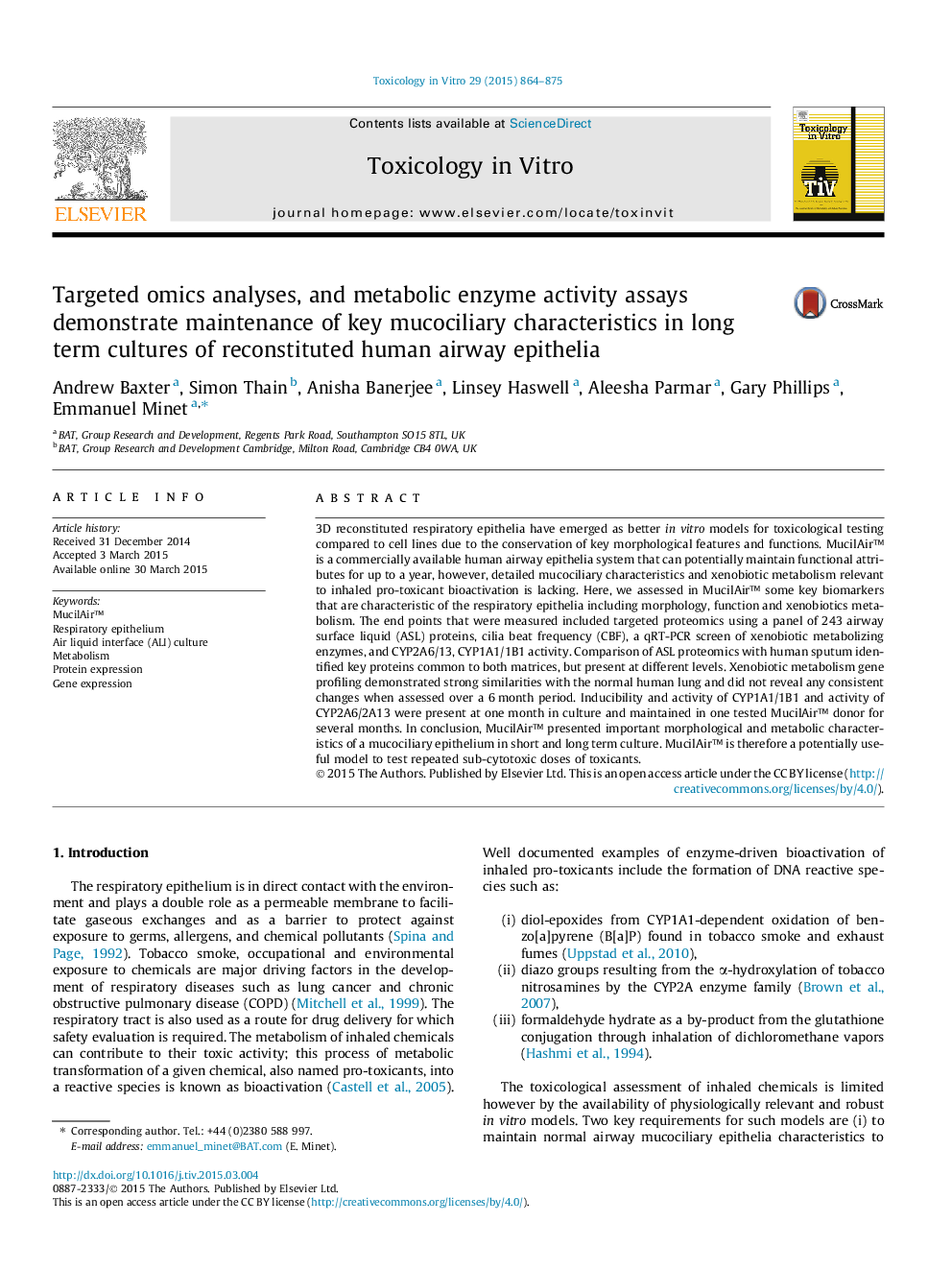| Article ID | Journal | Published Year | Pages | File Type |
|---|---|---|---|---|
| 5861665 | Toxicology in Vitro | 2015 | 12 Pages |
â¢Characterization of long term MucilAir⢠cultures to evaluate suitability for repeat-dose testing of inhaled chemicals.â¢Airway surface liquid marker proteins are secreted in long term MucilAir⢠cultures.â¢Expression of genes coding for xenobiotics metabolizing enzymes is similar between MucilAir⢠and normal lung.â¢Activity of CYPs involved in the bioactivation of inhaled toxicants is present and maintained in long term MucilAir⢠cultures.
3D reconstituted respiratory epithelia have emerged as better inâ£vitro models for toxicological testing compared to cell lines due to the conservation of key morphological features and functions. MucilAir⢠is a commercially available human airway epithelia system that can potentially maintain functional attributes for up to a year, however, detailed mucociliary characteristics and xenobiotic metabolism relevant to inhaled pro-toxicant bioactivation is lacking. Here, we assessed in MucilAir⢠some key biomarkers that are characteristic of the respiratory epithelia including morphology, function and xenobiotics metabolism. The end points that were measured included targeted proteomics using a panel of 243 airway surface liquid (ASL) proteins, cilia beat frequency (CBF), a qRT-PCR screen of xenobiotic metabolizing enzymes, and CYP2A6/13, CYP1A1/1B1 activity. Comparison of ASL proteomics with human sputum identified key proteins common to both matrices, but present at different levels. Xenobiotic metabolism gene profiling demonstrated strong similarities with the normal human lung and did not reveal any consistent changes when assessed over a 6 month period. Inducibility and activity of CYP1A1/1B1 and activity of CYP2A6/2A13 were present at one month in culture and maintained in one tested MucilAir⢠donor for several months. In conclusion, MucilAir⢠presented important morphological and metabolic characteristics of a mucociliary epithelium in short and long term culture. MucilAir⢠is therefore a potentially useful model to test repeated sub-cytotoxic doses of toxicants.
